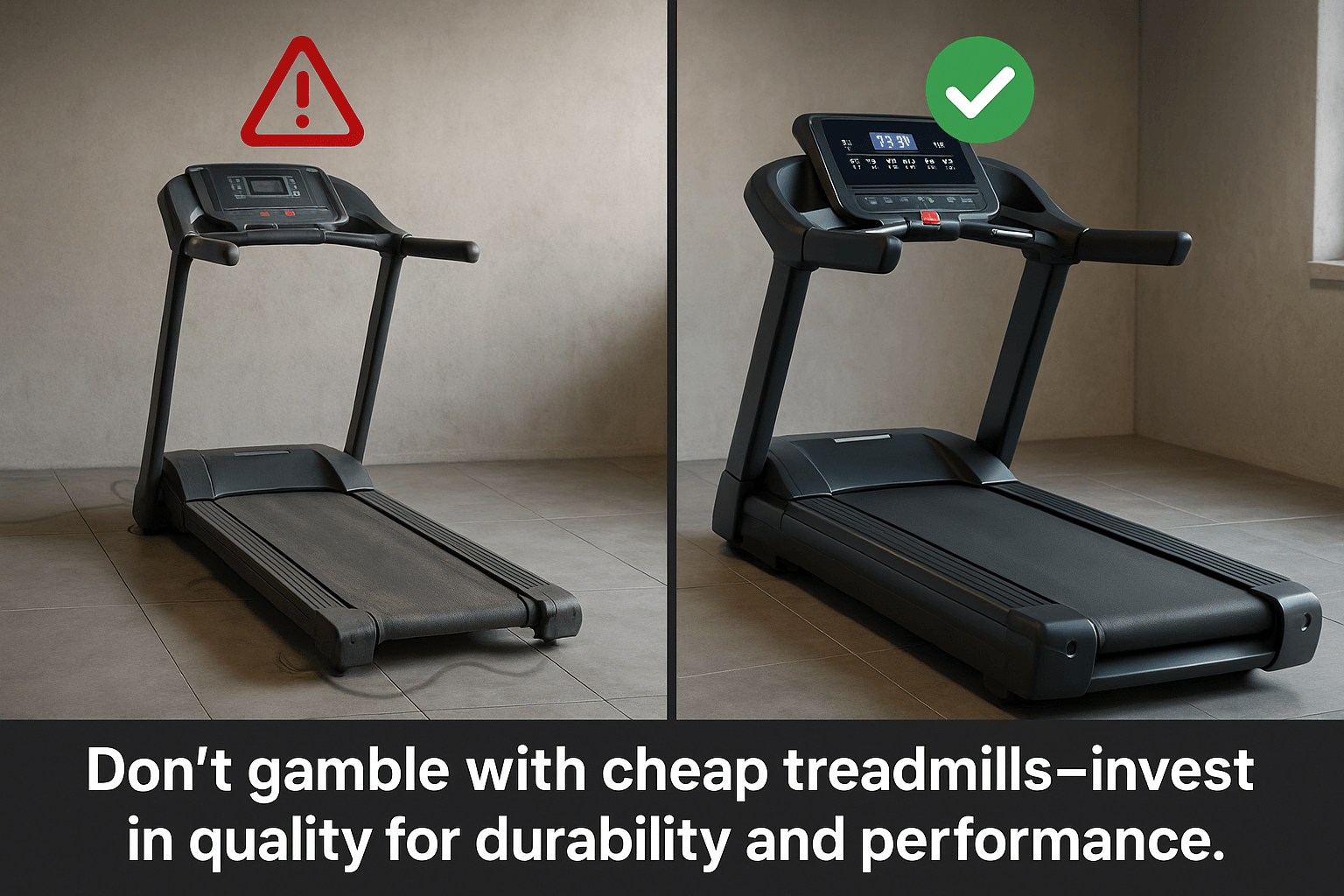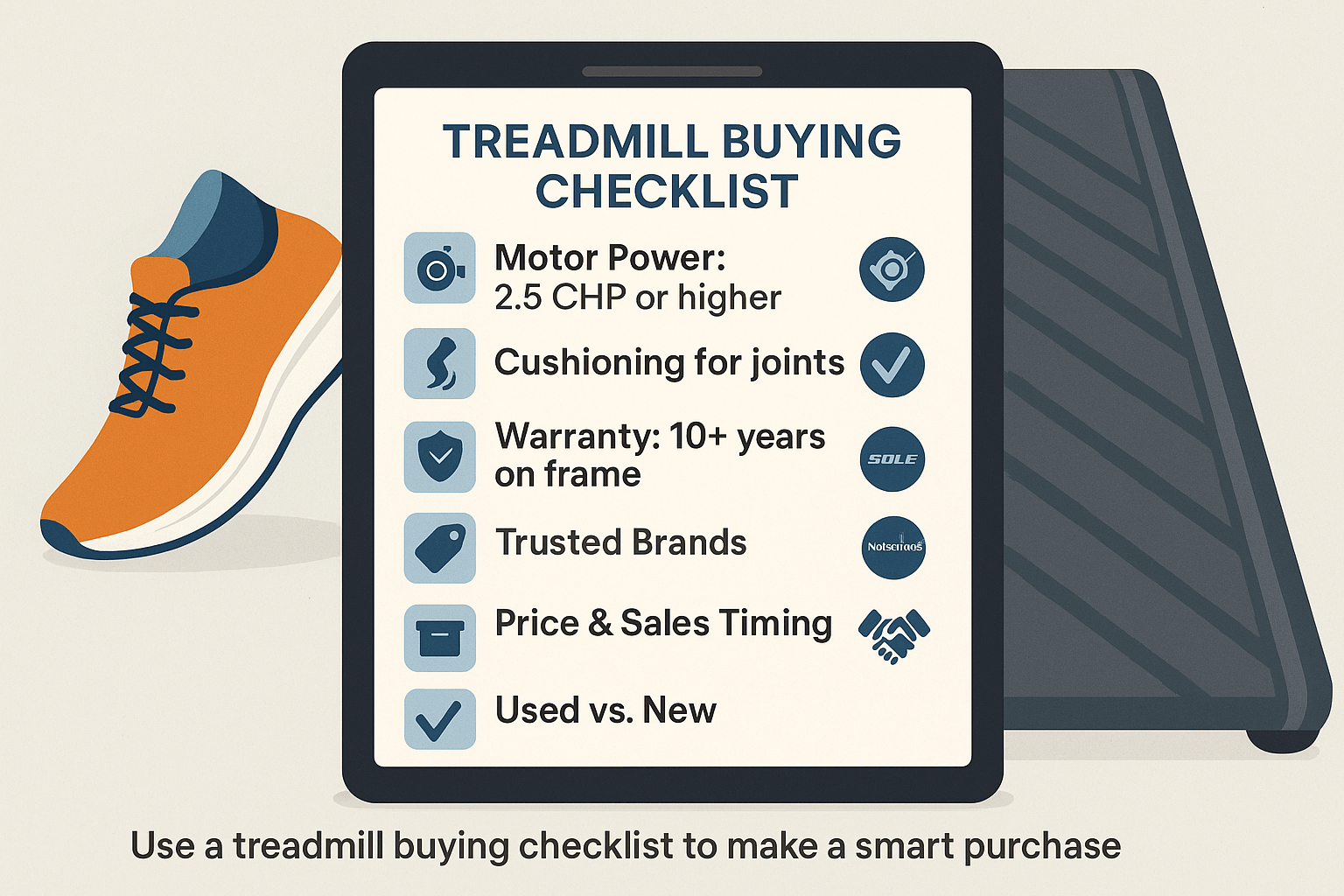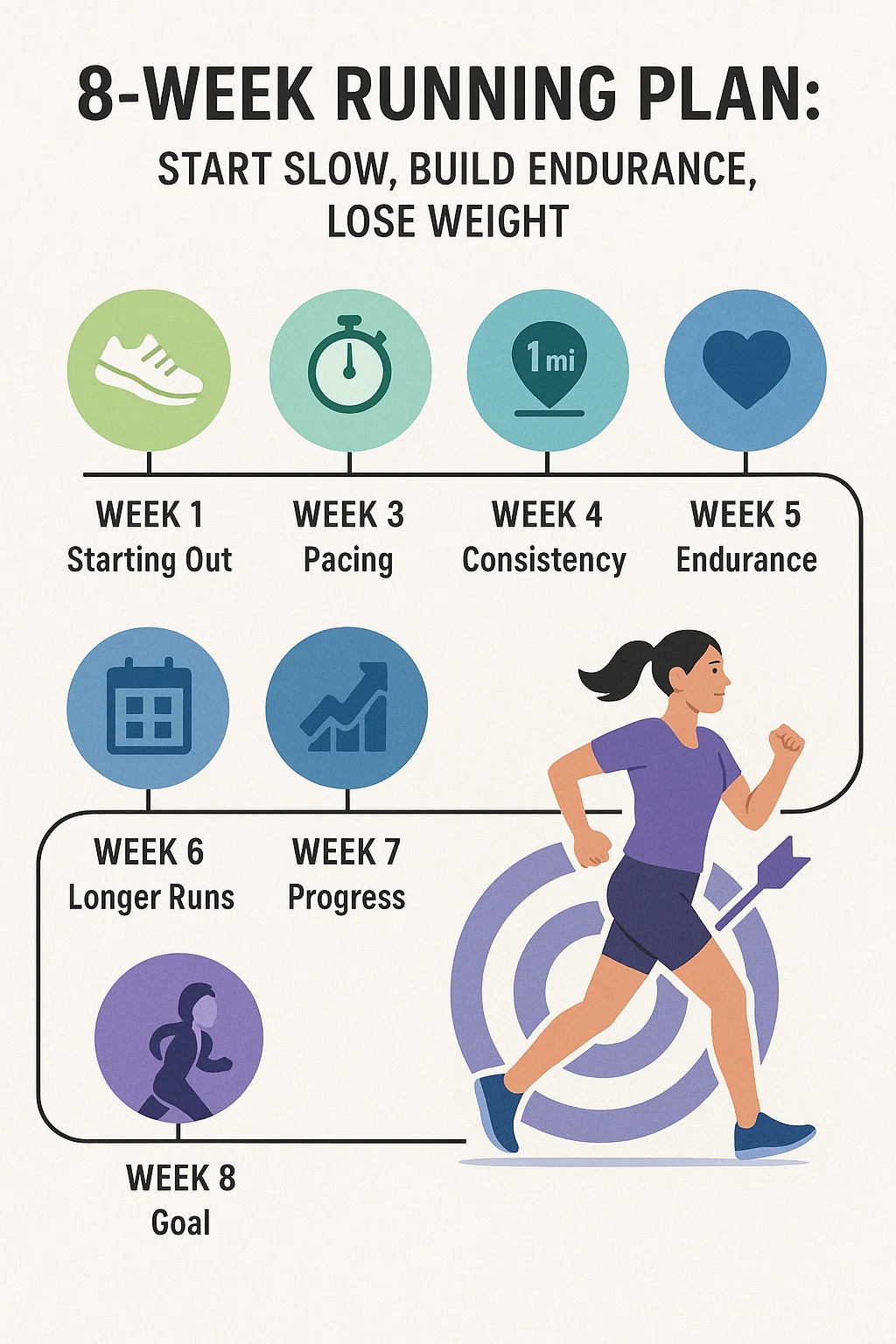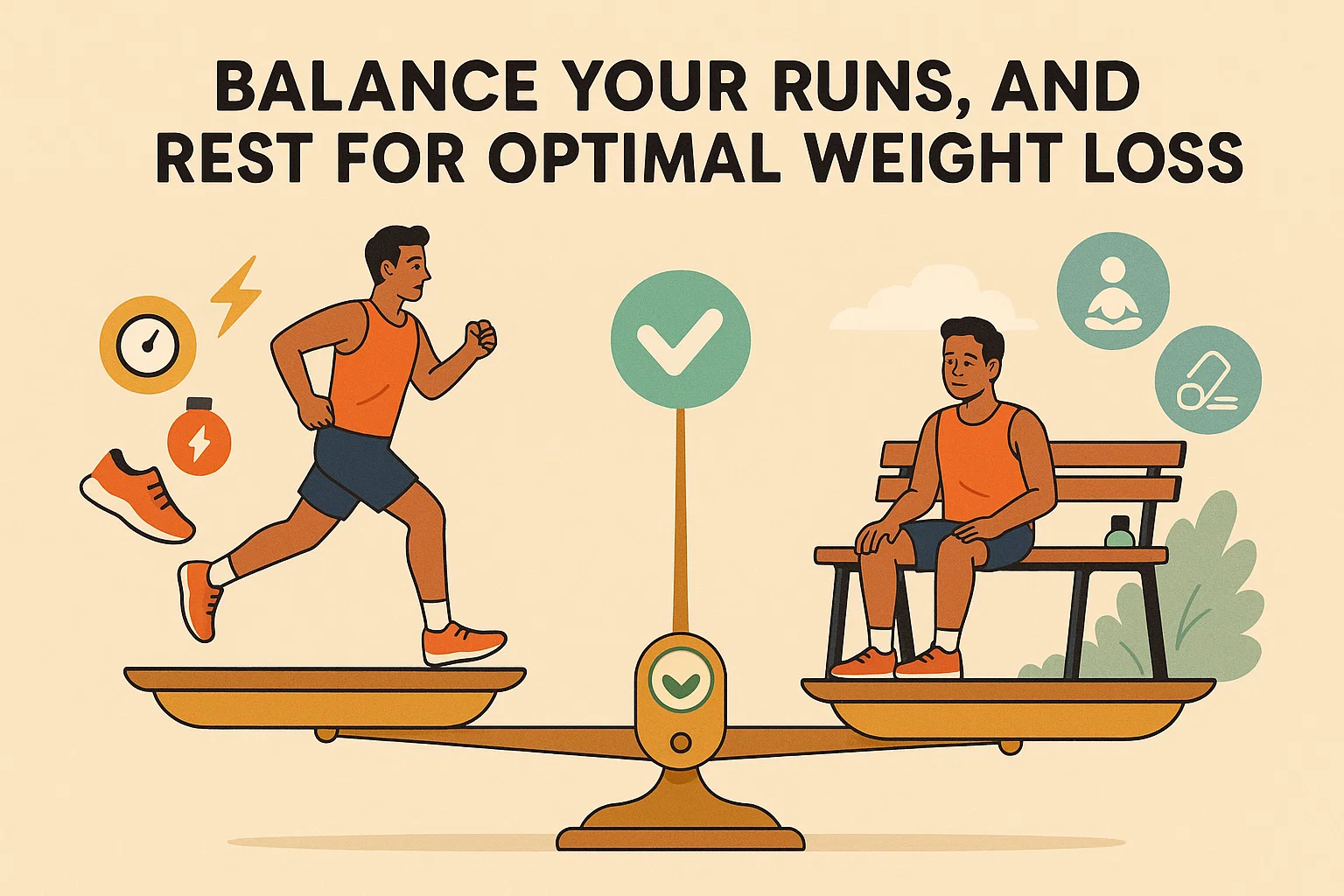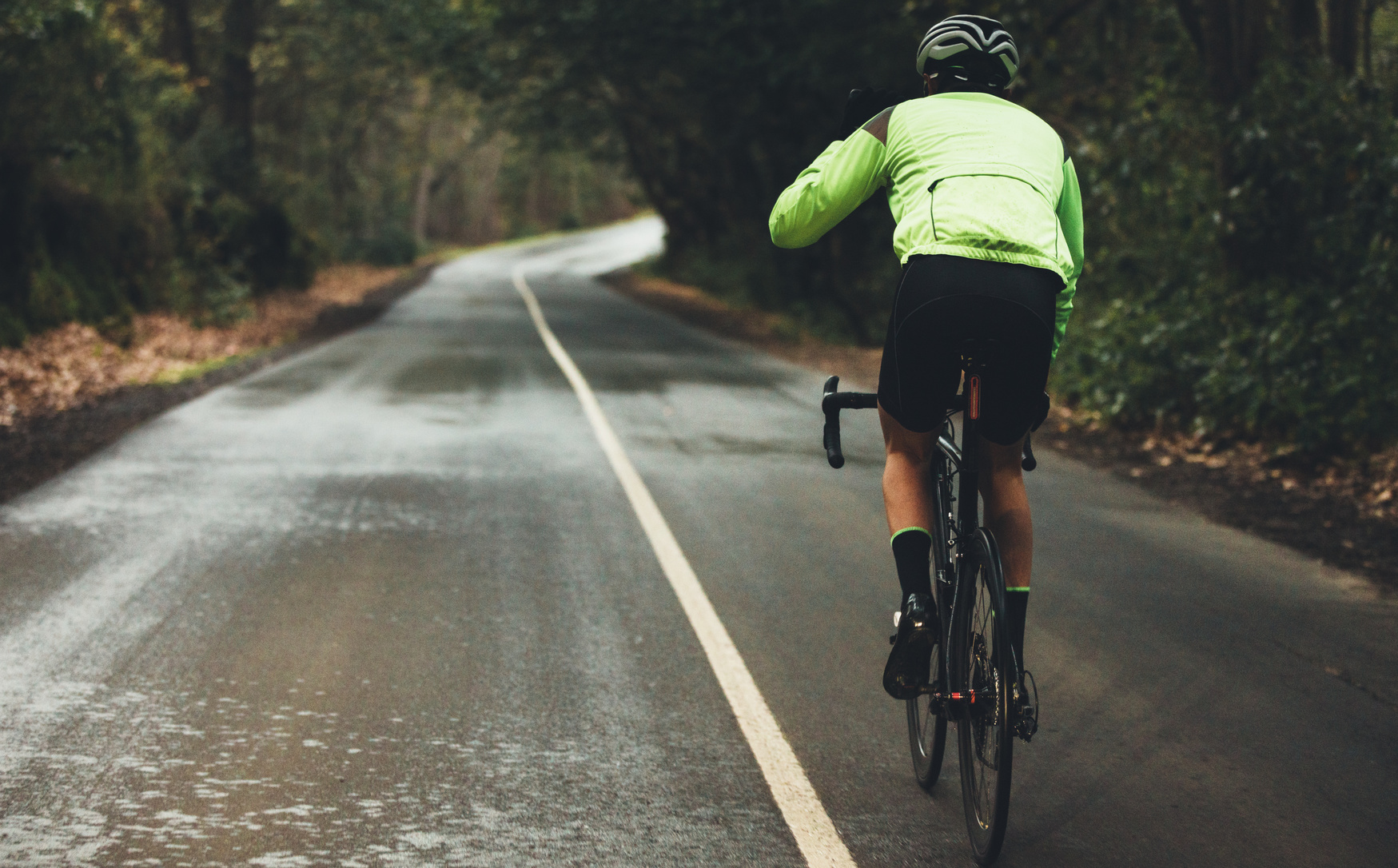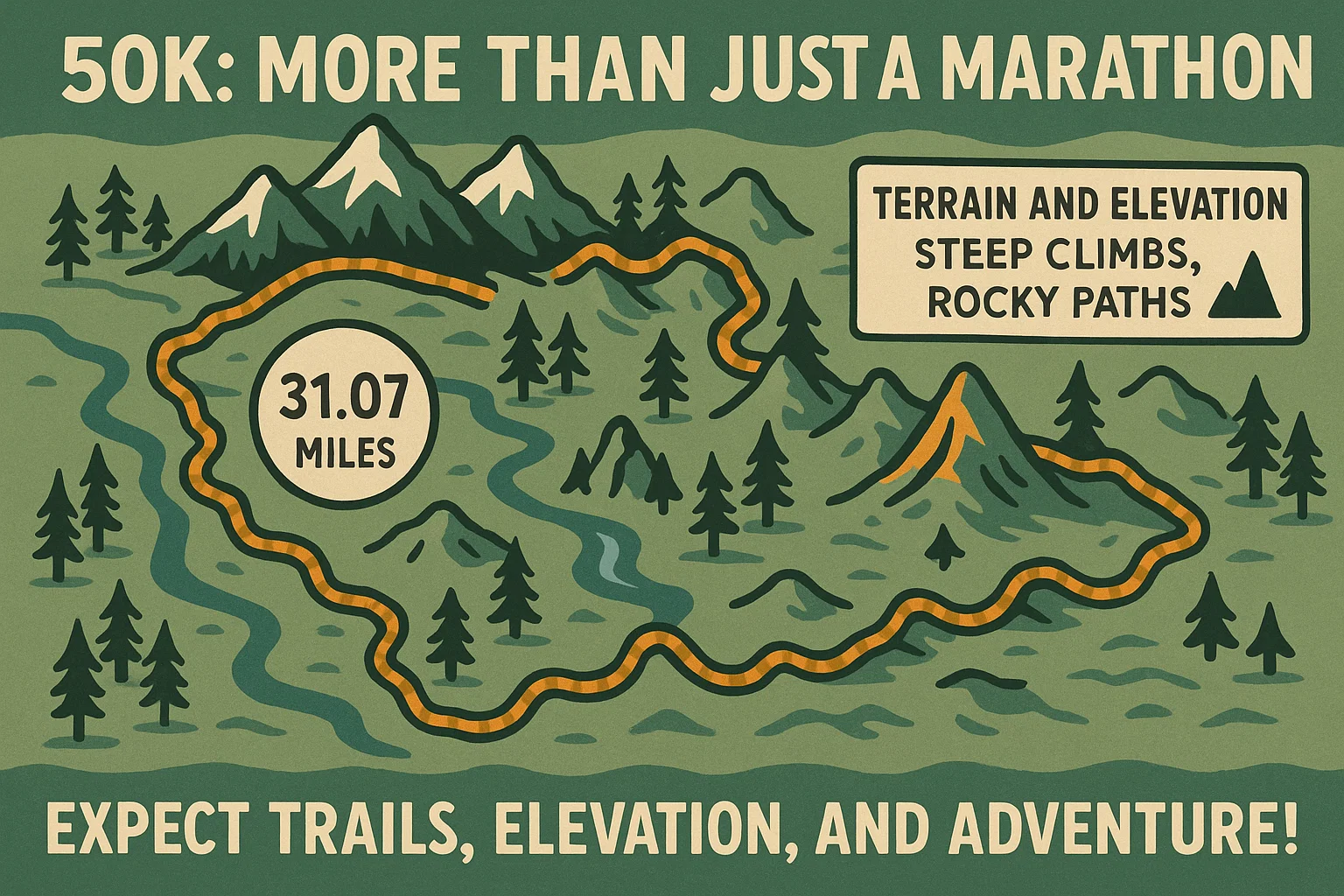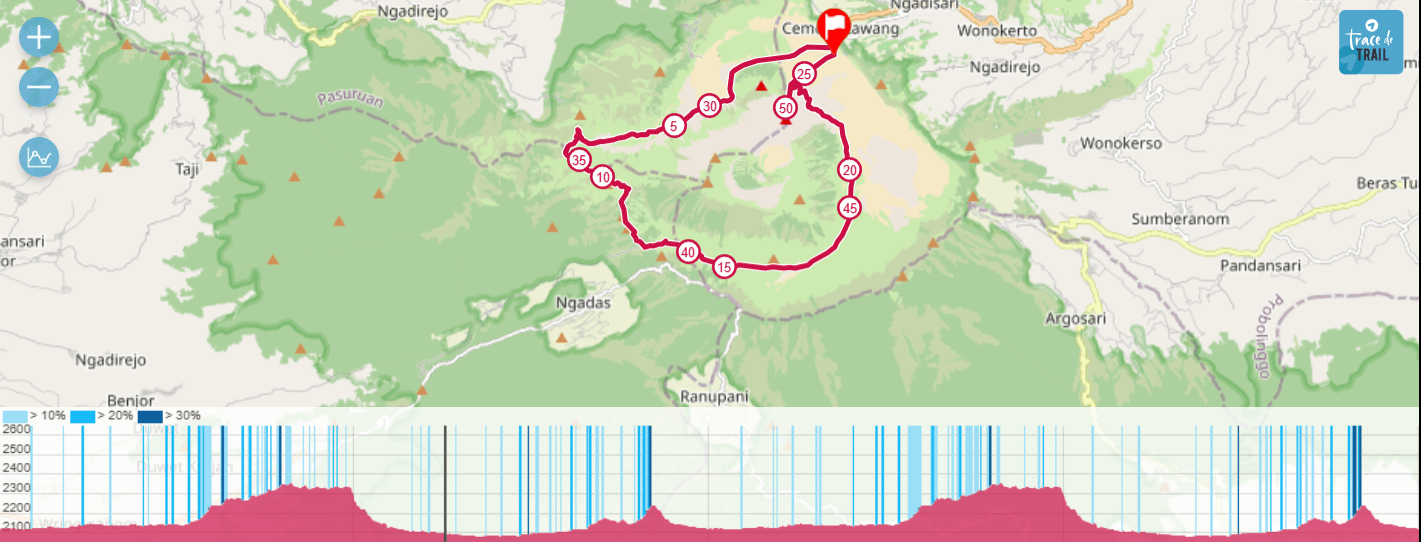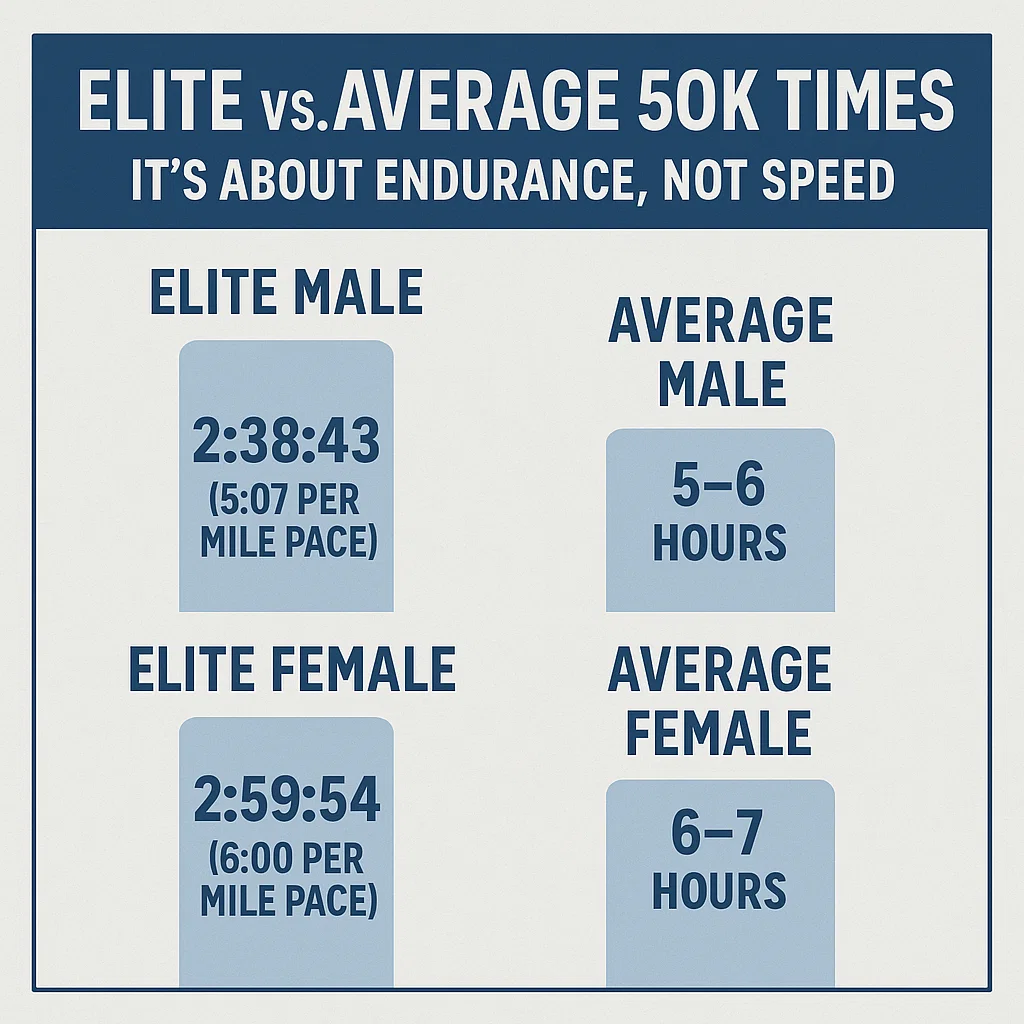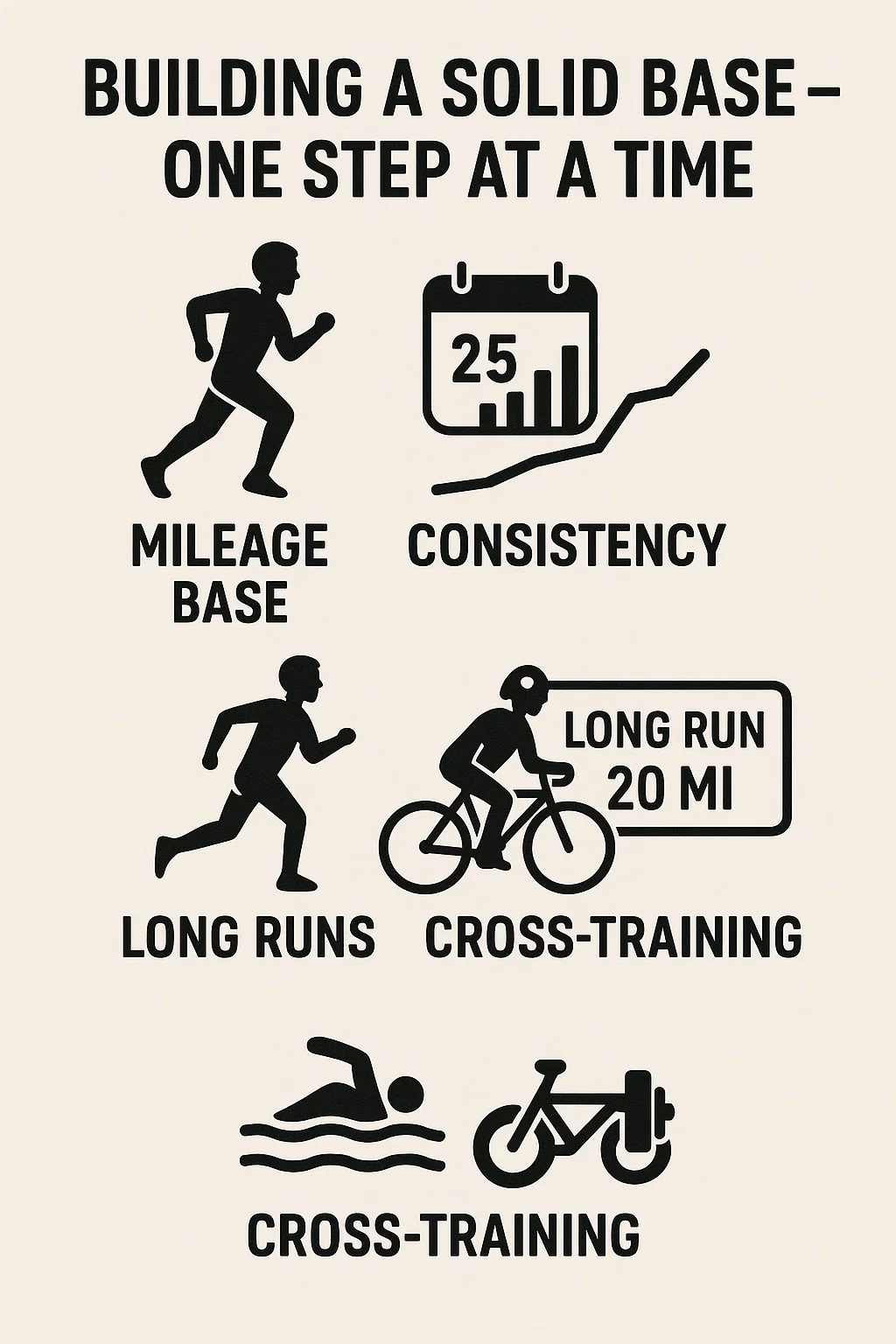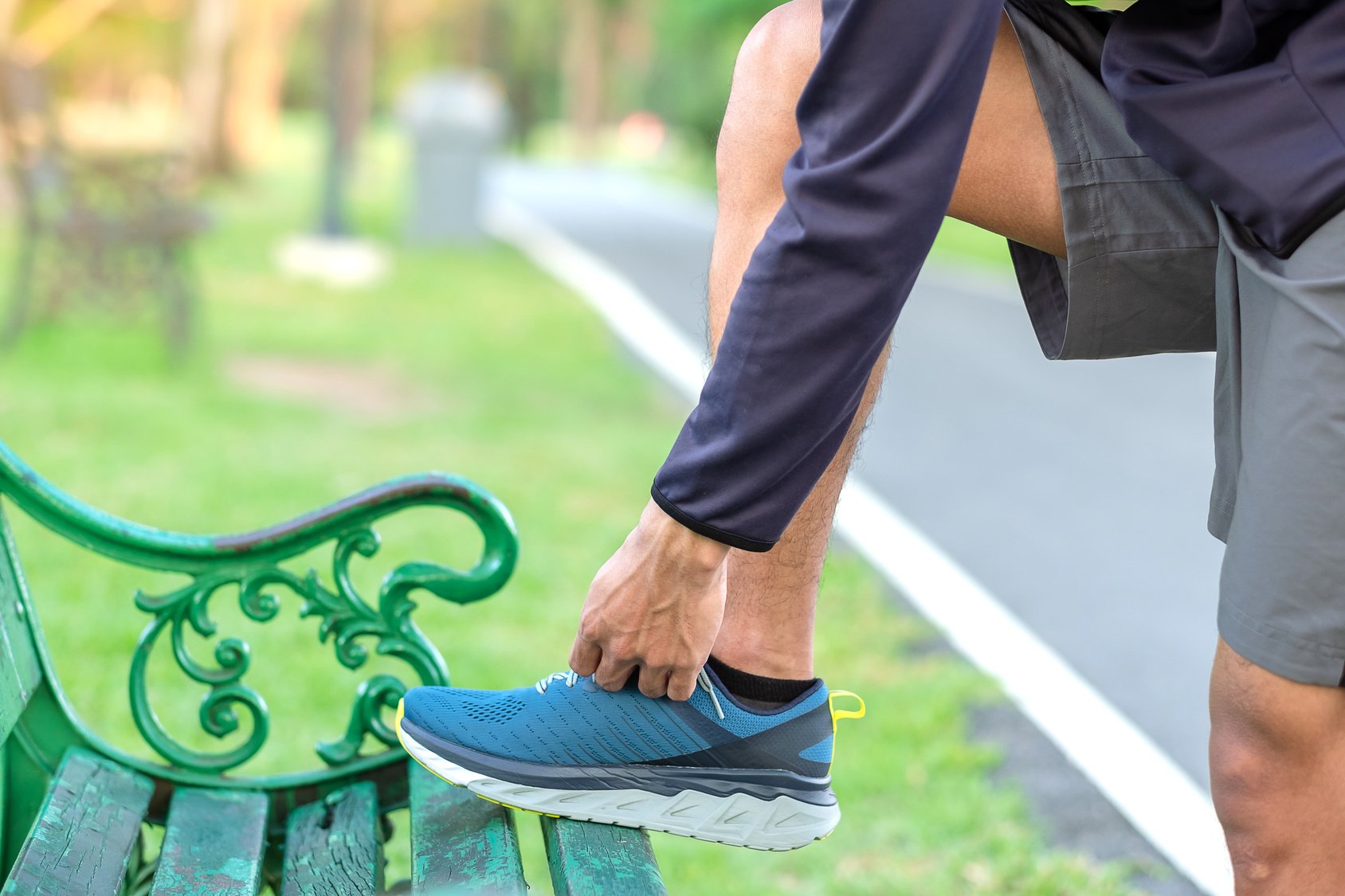Ever found yourself wondering, “Should I try a run streak?” or “Is it even safe to run every single day?” You’re not alone.
I get asked that all the time—especially from runners who want to break through a plateau, build discipline, or just need a new challenge to stay fired up.
And the answer is: yeah, you can run every day—if you do it smart.
A running streak (a.k.a. “streaking”) can be one of the best tools out there to build mental toughness and lock in consistency.
But let me be straight with you—it’s also a fast track to burnout or injury if you dive in blindly. So before you lace up for 30 days straight, let’s walk through exactly how to do this right.
This guide isn’t fluff. We’ll cover:
- What a running streak actually is (including official definitions)
- How to start a streak without trashing your body
- The pros, the cons, and everything in between
- Real stories from the streaking trenches
- And the running nerd stuff too—because yeah, there are rules and records
Sound good? Let’s dig in.
What Even Is a Run Streak?
Alright, here’s the deal. A run streak means you’re running every single day, no breaks.
Not every other day. Not “most days.” Every. Single. Day. Minimum distance? One mile.
And yes, that includes holidays, hangovers, sick days, and “I just don’t feel like it” days.
Official Definition
The folks at Streak Runners International (SRI) and the U.S. Running Streak Association (USRSA) define it like this:
You must run at least one mile (1.61 kilometers) within each calendar day.
Doesn’t matter where—road, treadmill, trail, around your couch. If you cover that mile, the streak lives. Miss it? You’re back to day one.
Want your name in the record books? You’ll need to hit at least 365 days in a row. (Yeah, no pressure.)
But hey, you don’t need a plaque on a wall to make streaking worth it.
You can start a streak on your own terms. For me, it’s about showing up—rain or shine, tired or not. And honestly, that mindset is half the reward.
Real Talk: Streaking ≠ Daily Training
Let’s clear something up—a run streak isn’t the same as following a smart training plan.
In a traditional plan, you’ve got rest days, hard days, long runs.
It’s designed to get you ready for a race. But with a streak, the streak itself is the goal. It’s about consistency over performance.
You’re not trying to set a PR every day.
Some days, your run might just be a slow mile around the block. And that’s totally fine. One guy I know hit a year-long streak running mostly easy miles—he just didn’t want to break the chain.
Bottom line: your streak is about showing up, not blowing up your legs.
The Wild World of Streak Runners
Think you’ll be alone out there? Not a chance.
There’s a whole world of streakers out there—and they take this seriously.
SRI & USRSA Stats (Yep, There Are Stats)
- As of now, there are close to 5,000 active running streaks logged worldwide.
- Over 8,000 streaks total, including retired ones.
- Longest streak ever? Brace yourself—Jon Sutherland ran for 20,309 consecutive days. That’s over 55 freaking years. Let that sink in.
Women are holding it down too. The legendary Lois Bastien has over 45 years of streaking under her belt.
Now, I’m not saying you’ve gotta streak for half a century—but seeing what’s possible is pretty damn inspiring.
Streak Levels (A.K.A. Bragging Rights)
The community even came up with streak “tiers” based on how long you’ve been at it:
- Neophyte: 1 to <5 years
- Proficient: 5 to <10 years
- Experienced: 10 to <15 years
- Well-Versed: 15 to <20 years
- Highly Skilled: 20 to <25 years
- Dominators: 25 to <30 years
- Masters: 30 to <35 years
- Grand Masters: 35 to <40 years
- Legends: 40 to <45 years
- Coverts: 45 to <50 years
- Hills: 50+ years (only a handful of humans have made it this far)
Sure, it’s tongue-in-cheek—but it’s fun. And it gives you something to shoot for if you love tracking your milestones.
Community Makes It Stick
Want to know what really keeps a streak alive (besides pure stubbornness)? Community.
There are massive online groups where streakers post daily updates, motivate each other, and share how they snuck in miles between diaper changes or work meetings.
A few great ones:
- Runner’s World Run Streak (Facebook) – Tens of thousands of members
- Streak Runners International Facebook Group – A smaller but hardcore crowd
- Seasonal streak challenges (like Memorial Day to July 4th, or Thanksgiving to New Year)
I’ve seen folks squeeze in midnight treadmill miles just to keep their streak alive. One runner told me, “When you commit to running every day, you leave no room for excuses.” Amen to that. Whether it’s 5 a.m. in the dark or 11:59 p.m. in a hotel hallway—you show up.
And when you know there are thousands of others doing the same, it hits different. You’re not just running—you’re part of something.
Why Run Every Day? Here’s Why Streaking Works (Even When It Sounds Crazy)
You’ve probably heard of “run streaks”—running every single day, no matter what. And maybe your first reaction was like mine: Why would anyone do that to themselves?
But hear me out. After years in the game—coaching runners, running through burnout, and watching my own habits evolve—I can tell you that streaking can be a powerful weapon in your runner’s toolbox.
It’s not about showing off.
It’s about building the kind of consistency and mental toughness that transforms you from someone who runs… into someone who doesn’t miss. Let’s break it down.
1. It Locks In the Habit (No More “Should I Run Today?” Debates)
One of the biggest wins of a run streak? It takes the decision-making out of the equation. You stop asking, “Should I run today?” and instead start thinking, “When am I getting it done?” That mental shift alone is huge.
I’ve had runners tell me that once they committed to a 30-day streak, it actually got easier to get out the door. Why? Because the inner negotiation disappeared. You’re not making the choice every day. You already made it—on day one.
Here’s what one guy told me after his 30-day streak:
“There was no discussion, no decision to make. I already made the call at the start. I just had to run.”
Simple. And effective.
Lazy Day Killer
Let’s be real—some days you just don’t wanna move. Maybe it’s cold, maybe you’re tired, or maybe life is just being… life. But once you’ve got a streak going? You don’t want to break it. That alone can get you out the door when nothing else will.
I’ve seen this over and over. One runner hit 30 days and said,
“It was hard to stop. I regretted breaking it. The habit was locked in.”
David Pharr, a beast of a runner with an 11-year streak, said that before streaking, he’d go a full month without running just because the weather sucked or he felt off. Now? No room for those excuses.
You Start Seeing Results
And here’s the kicker: consistency pays off.
One runner told me that during his year-long streak, he set PRs in almost every distance—from 5K to half marathon. Now, look—I’m not saying everyone will get faster just by running every day. But daily, easy-paced running can improve aerobic fitness over time—especially if you manage the effort smartly.
At the very least, it keeps your base strong and your engine warm.
2. It Builds Grit, Flexibility, and Mental Armor
When you run every day, you get real good at adapting. Life doesn’t stop, but neither do you—and that’s where the growth happens.
Excuse-Proofing Your Routine
Run streaks don’t care if it’s raining, snowing, or your day is packed. You find a way.
It might mean running before sunrise, after dinner, or during your lunch break. But you make it work. That’s a superpower.
One coach I know put it perfectly:
“When you’re streaking, there’s no space for excuses like missed alarms or late meetings. You just get it done.”
That mindset sticks. Suddenly, you’re not the kind of runner who folds when life gets messy.
Creative As Hell
You’d be amazed at the things streak runners do to keep the streak alive.
I’ve seen folks jogging laps in parking lots at 11:30pm. One guy ran in literal circles on a ferry deck during a 20-hour trip from Italy to Greece—just to squeeze in that one-mile minimum.
Was it pretty? Nope. But it was done. And that kind of commitment rewires you.
Weather-Proof Warrior
Rain? Snow? Blazing heat? Bring it on. The more days you log, the more conditions you’ve faced—and that means race day starts to feel like just another run. You’ve trained through worse.
You learn to be flexible. You learn grit. You become that runner.
But—and I can’t say this loud enough—don’t confuse resilience with stupidity. Running through a storm? Fine. Running through an injury? Don’t be that runner.
You’ve gotta learn the line between discomfort and danger. One builds toughness. The other breaks you.
The Real Health Perks of Running Every Day
Yeah, it can help you live longer—and not just by a little.
We all know running is good for us, but here’s the kicker: even a short daily run—like 10 minutes—can pack some serious health punch.
Not saying you have to train like an Olympian, just lace up and move every day. Keep it moderate. Keep it real.
1. Heart, Lungs, and Longevity
There’s a monster study from 2014 (over 55,000 people tracked) that straight-up showed daily runners—even those logging just 5 to 10 minutes a day—had up to a 45% lower risk of dying from heart disease. Let that sink in.
A short, consistent run can literally help you live longer. Your heart pumps stronger, blood flow gets better, and your lungs become more efficient. That’s not hype. That’s science.
When I first read that study, I thought: “That’s wild. You don’t even have to run long—just consistently.”
2. Cancer? Exercise Fights Back
Let’s talk real stats. A massive meta-study published in JAMA Internal Medicine looked at 1.4 million people.
Yep—million. The researchers found that people who exercised regularly (like those who get in a daily run) slashed their cancer risk in a big way.
Here’s how it breaks down:
- Esophageal cancer: 42% lower risk
- Liver: 27%
- Lung: 26%
- Kidney: 23%
- Colon: 16%
- Breast: 10%
This wasn’t just elite athletes—we’re talking average folks who stayed active.
That’s where a daily run streak fits in. You’re stacking the odds in your favor every time you lace up and move.
No, it’s not a magic bullet. But it does put you on offense instead of defense when it comes to your health.
3. Metabolic Mojo
Running every day—even at a chill pace—helps your body burn fuel better.
You become more insulin sensitive (that’s a good thing), your blood pressure starts behaving, and cholesterol levels can fall into place.
Think of it like tuning up your engine. When you run, your metabolism stays fired up. Miss too many days in a row and that engine gets rusty.
I’ve seen runners clean up their blood sugar numbers in just a few months of consistent easy running. Not by hammering hard workouts—just by showing up every day.
4. Mood Booster, Brain Fuel, Stress Killer
This one hits close to home. I don’t just run for fitness—I run for sanity.
Running gives your brain a chemical cocktail of endorphins and endocannabinoids (your body’s natural feel-good messengers). It lifts your mood. Clears your head. Helps manage anxiety and stress.
One runner I follow on Reddit said he started streaking to help his depression.
Over 100 days later, he wasn’t just mentally better—he’d lost weight, had more energy, and found purpose in that daily effort.
I’ve had those days too—when the run isn’t about pace or distance, it’s about showing up for yourself.
Daily runs = moving meditation. Some days it’s therapy. Some days it’s just sanity in a chaotic world.
5. Routine = Stability = Strength
When running becomes as automatic as brushing your teeth, you stop yo-yoing between binge workouts and total slumps.
A moderate daily run can balance your appetite, sharpen your sleep, and smooth out your energy levels.
And the best part? Most streak runners don’t go hard every day. They keep it chill. That’s the secret sauce. Run easy most days, and the benefits stack up without burnout.
Motivation: Why a Run Streak Lights a Fire in You
It’s more than just logging miles. It’s about momentum, mindset, and mini victories every single day.
Let’s talk about the mental game. This is where run streaks shine.
1. That Sweet, Daily Win
Every time you get out the door—even for a slow mile—you win. Doesn’t matter if the rest of your day was a mess. You still kept the streak alive.
And that’s addictive in the best way. Your brain starts craving that hit of consistency.
You feel accomplished. Like, “Hey, I didn’t let myself down today.” That’s a powerful shift.
One runner said his streak year was “the best year of my life.” Not because every run was great—but because every run gave him purpose.
2. Mental Grit—Forged One Day at a Time
There are going to be days when your body’s tired, weather sucks, and motivation’s gone missing.
But you run anyway. And that builds a different kind of strength—mental toughness.
You stop making excuses. You prove to yourself that you’re the kind of person who shows up. That confidence spills over into every part of life.
If you’ve ever run through a snowstorm, on a day you wanted to quit, you know what I’m talking about.
3. Accountability & Community
Post your streak. Share your runs. Join a group. It keeps you honest.
I’ve seen runners stay motivated just by seeing that one friend post a “Day 83” run. Suddenly, skipping doesn’t feel like an option. You want to keep up. That quiet accountability pushes you forward.
And yeah, getting a few high-fives on Strava or Reddit feels good too.
4. Momentum Is Real
The longer the streak, the harder it is to break it. And that’s a good thing. Once you’ve hit 30 days, you’ll want to keep going. You’ve invested too much to stop now.
Every day becomes another brick in the wall. That sense of progress becomes fuel.
I’ve had runners tell me they dreaded missing a day more than they dreaded the run itself. That’s how strong the momentum gets.
5. Routine That Grounds You
Knowing you’ve got a run to knock out each day can simplify your life. Less overthinking. More doing.
If you run every morning, it sets your tone. It’s your time. Your anchor. Your non-negotiable. For a lot of folks, it’s the only part of the day that’s truly theirs.
I’ve had runners say their streak helped them stay grounded through divorce, job loss, depression, and lockdowns. That one mile? It was everything.
Absolutely — here’s a David Dack-style rewrite of that section: raw, grounded, and no-BS, while still keeping every research-backed fact intact and weaving them into a real-runner tone. Let’s dive in:
The Real Talk on Running Every Day (It Ain’t All Glory)
I get it—running every day sounds badass. It shows commitment, grit, and consistency.
But here’s the deal: it’s not all sunshine and runner’s highs.
There are downsides, and they’re real. I’ve seen it. I’ve felt it. So before you jump on that streak bandwagon, let’s break down the honest-to-God drawbacks of daily running.
No Rest Days = No Full Recovery
This is the big one. The absolute elephant in the room. When you’re running every single day, you’re never really giving your body time off—and that’s a problem.
Even easy runs cause micro-damage to muscles, tendons, and joints.
Normally, your off days are when the body rebuilds and gets stronger.
But when you never shut it down, you never get that full repair cycle.
One core training principle says it straight: “Rest is integral to maximize the benefits of training… muscles, joints, and bones need a chance to repair and adapt.”
No rest = no full gains. Simple as that.
Real-world example? I worked with a guy who kept up a multi-year run streak.
Thing is, his paces started dipping. Legs were always heavy. He was dragging through workouts he used to crush.
Eventually, he realized his “never miss a day” mindset was costing him his racing edge. He ditched the streak and, sure enough, his speed came back.
Can’t Take a Day Off—Even When You Should
This one hits home for a lot of streakers. Say you wake up and your knee feels sketchy.
Or you’ve got the flu. A smart runner would rest. But the streak? That voice in your head says, “Just one mile… don’t break the chain.”
And that’s how minor pains turn into major injuries.
I’ve talked to runners who’ve limped through one-mile streak savers in 102-degree fevers or with sharp ankle pain, all because they didn’t want to “fail.”
One guy told me, “When I was streaking, I’d push myself out for a mile even when I knew I needed rest. It wasn’t healthy.”
“Rest Day” = Still Running? Not Quite.
Some streakers say their “rest day” is a gentle mile.
And sure, trotting out a slow mile is better than hammering every day. I’ve done it too—just one lazy loop around the block to keep the streak alive.
But let’s not pretend that’s the same as actual rest. Your body still has to lace up, move, absorb impact. It’s active recovery at best—not full-on rest.
If your legs are toast from a long run or race, that extra day off could be the difference between bouncing back strong or setting yourself up for burnout.
Overuse Injuries: The Silent Streak Killers
Here’s the harsh truth—running every day jacks up your risk of overuse injuries. I’m talking shin splints, stress fractures, tendonitis, IT band issues—the works.
Running is high-impact, no matter how smooth you are. And doing it seven days a week means your body’s taking hits without enough downtime to recover.
More Miles, More Risk (It’s Proven)
According to a massive systematic review, runners doing over 40 miles per week had way higher injury rates—2.2x for men and a whopping 3.4x for women.
That’s not small. Sure, some streakers keep it low—just a mile a day. But once that streak mindset kicks in, a lot of folks slowly add volume, chasing more miles without adding rest.
And frequency alone can mess you up.
A breakdown of multiple studies shows the safest sweet spot is 2–5 running days per week. Bump that to 6–7, and injury rates spike.
You’re putting more wear and tear on the same moving parts without the buffer of a recovery day.
Cumulative Load = Trouble Spots
Even if you’re not clocking crazy miles, the repetitive stress adds up.
Day after day, your knees, feet, shins, and Achilles are taking small hits that compound over time.
One runner told me, “I ignored a little twinge in my shin for weeks… boom, stress fracture.” He’d been doing a run streak and thought short, easy miles were safe. But the body disagreed.
It’s like running on a credit card. You can rack up stress for a while—but eventually, you’ll pay for it.
Know Your Body (Or It’ll Let You Know)
Not everyone can handle daily pounding. Your biomechanics, age, past injuries—they all play a part.
I had shin splints in college, so now I cap my week at five running days, max. And I’m fine with that. I’d rather run five days for years than seven days for a few injury-plagued months.
Heck, one Reddit runner racked up a streak… until a tibial stress fracture benched him for months. Now he runs five days a week and feels great.
Don’t be the runner who learns the hard way.
The Heartbreak of the Streak Gone Wrong
There are streak legends who ran through airports and snowstorms just to log a mile.
But there are also streak heartbreaks. One runner I know kept a 4.5-year streak alive—until a foot stress fracture finally stopped him cold.
That streak was everything to him. But the injury didn’t care. He was sidelined, frustrated, and eventually realized that chasing the streak had blinded him to what his body had been screaming for months.
Smart Tips if You’re Gonna Streak Anyway
If you’re all in on streaking (and hey, I get the appeal), here’s how to protect your body:
- Keep it easy most days—don’t race your daily runs.
- Don’t chase mileage just to feel productive.
- Rotate your shoes—this matters more than you think.
- Hit the trails or grass to soften impact.
- Strength train—this keeps your muscles and joints bulletproof.
- And most importantly: Listen to those warning signs. A little ache can turn into a months-long layoff if you ignore it.
One coach put it best: “More frequent running isn’t always better—especially if your body’s giving you signals. Don’t let your ego make decisions your joints have to pay for.”
Warning Signs You’re Running Yourself Into the Ground
Let’s talk about overtraining — the sneaky villain that creeps up on even the most motivated runners, especially during a run streak.
I’ve seen this too many times: someone’s 40 days deep into a daily streak, feeling invincible… until BAM — fatigue hits like a truck. Suddenly, their easy pace feels like a death march, motivation tanks, and their body’s throwing up all the warning flags.
If that’s you — listen up.
Here’s how your body waves the red flag:
Resting Heart Rate is Creeping Up
You roll out of bed, check your pulse, and it’s 5–10 beats higher than usual? That’s not just caffeine or a bad dream — it could be your body shouting, “Dude, I’m not recovered.”
A lot of seasoned runners track their morning pulse for this exact reason. It’s like your early warning radar.
You Can’t Sleep — Even Though You’re Exhausted
It’s weird, right? You’d think running daily would knock you out cold. But when you’re overtrained, your nervous system is revving too high — and you’re tired but wired. If you’re tossing and turning or waking up a ton, that’s a sign your body’s overstressed.
You’re Always Tired, Even on Easy Days
If your legs feel like lead every single run, and your recovery jogs feel harder than they should, something’s off. That zombie-run feeling? It ain’t normal. Time to pay attention.
You’re Getting Sick More Often
A suppressed immune system is another gift from overtraining. If you keep catching bugs or just feel “off” all the time, it could be your body breaking down instead of building up.
Your Mood is in the Gutter
Cranky, anxious, snapping at your spouse or cat? Yeah, it’s not just life stress — overtraining can wreck your mood. I’ve had runners tell me they lost all joy in the run. That’s your brain saying “ease up,” even if your ego says “keep pushing.”
Appetite or Weight Changes
Some folks suddenly drop weight (not always in a good way), or lose their appetite completely. Others develop monster cravings. If you’re eating weirdly and your body feels off — don’t ignore it. Overtraining messes with hormones and hunger cues.
Little Pains That Won’t Go Away
A sore Achilles that won’t quit. A shin that nags for a week. Those tiny injuries that linger? They can become big problems if you don’t back off. Don’t let a streak turn into a stress fracture.
So What Do You Do?
If you’re ticking off several of these signs, it’s time to step back and reassess.
👉 Maybe drop the pace.
👉 Cut mileage.
👉 Shuffle a slow 1-miler and call it good.
👉 Or — gasp — take a rest day. Yes, even during a streak.
One sports medicine doc said it best:
“Persistent fatigue, elevated heart rate, trouble sleeping, and mood changes lasting more than a few days are signs you need to pull back.”
Ignore those, and you risk blowing up. And guess what ends the streak anyway? Injury.
If You’re Streaking Hard, Recover Harder
If you’re hell-bent on keeping the streak alive, build in recovery:
- Throw in active recovery days (easy 1-mile walk/jogs).
- Dial in your nutrition and hydration.
- Sleep like it’s your job.
- Cross-train with yoga, light cycling, or swimming.
But never let your pride override what your body’s telling you. The streak should serve your health — not sabotage it.
How to Start a Run Streak Without Blowing Yourself Up
You thinking about streaking? I respect that. It takes guts.
But here’s the deal: starting is easy, finishing strong takes smarts. Especially if you’re newer to running.
Don’t Start From Zero
If you’re brand new to running, don’t streak yet. Seriously.
Trying to run every single day without a running base is like trying to deadlift your bodyweight without ever hitting the gym. You will break.
I tell my coaching clients this all the time:
“Earn your streak.” You need at least 6 months of running 3–5 days a week before you go daily.
Build your base. Get your bones, joints, and tendons used to the pounding. Running daily is high-frequency stress, and beginners aren’t built for that yet. You’ve got to let your body catch up.
Beginner Option: Walk Streak or Run/Walk Streak
If you’re starting from scratch, try streaking with walking or run/walk combos:
- Walk a mile every day
- Do a 10-minute run/walk loop daily
- Keep it chill but consistent
You’ll still build the habit—without the injuries.
Start With a Short Streak Goal
Don’t declare a lifelong streak on Day 1. That’s pressure you don’t need.
Instead, commit to a mini-streak:
- Try 7 days straight. Can you do that?
- Then 14. Then 30.
- Stack wins.
One runner told me, “I was gonna stop at 10 days… but once I got there, I didn’t want to break the chain.”
That’s the psychology of momentum. Use it.
Milestones Are Your Best Friend
Don’t stare at some 365-day Everest. Break it down:
- Shoot for 10 days
- Then 20
- Then 30
Every milestone you hit builds confidence and routine. You start to feel like a runner—not someone “trying” to run.
Set an End Date (If That Helps)
If you’re streaking for a purpose—say, a holiday challenge or a training kickstart—it’s totally fine to pick an end date.
“30 days ‘til vacation,” “90-day New Year challenge,” whatever. That way, you know a rest day is coming, and you won’t mentally burn out.
You might decide to keep going after—but the finite goal makes it manageable in the beginning.
Keep It Easy, Keep It Short (Especially at the Start)
Let me be blunt: a running streak isn’t the time to go chasing PRs or piling on miles like you’re prepping for an ultra. The goal here is simple—show up every day. That means short, easy runs, especially in the beginning.
Most of your runs? They should feel like recovery jogs.
Easy enough to chat through. You’re not trying to be a hero—you’re trying to stay healthy and consistent.
On the effort scale, we’re talking a 4 out of 10. If you finish thinking, “I could’ve gone faster,” good—that’s the point.
One streaker told me the biggest lesson he learned was how to run truly easy. Like, zone 2 easy.
At first, he thought anything under 30 minutes was a waste of time. Now? He’s hitting short, gentle jogs daily, and feeling better than ever. That mindset shift? Game-changer.
Forget pace. Forget ego. Just run. If you’re tempted to push the pace, don’t.
Save that fire for a race. Some days, even run slower than you feel like you could. Consider that investment in tomorrow’s run.
One Mile Is Enough (Really)
Don’t underestimate a one-mile run. If you’re used to running 3 days a week, jumping to 7 is already a big leap. The body doesn’t just adjust overnight.
Start with a mile a day. That’s totally legit. The US Running Streak Association says one mile is the daily minimum for a streak—and plenty of long-term streakers live right at that line. It’s not about doing more. It’s about doing it again tomorrow.
Let’s say you were running 15 miles over 3 days a week. For the first few weeks of your streak? Spread those same 15 miles across all 7 days—or even back it off a bit. Once your body gets used to daily running, then you can gently nudge the volume up.
Use the Talk Test: If you can hold a conversation while running, you’re doing it right. If you’re gasping or feel trashed afterward? Slow down. Most runs should leave you feeling refreshed, not wrecked.
What About Speed Work?
Look, I get it—sometimes you wanna stretch the legs.
That’s fine… if you’re experienced. Maybe one or two days a week you sneak in some moderate effort—like a tempo run or some strides. But the rest of the time? Slow it way down to balance it out.
If you’re new to streaking? Skip the speed.
Your body’s already dealing with enough stress from the daily grind. The folks over at Real Life Runners said it best: “With increased frequency, your body’s already dealing with enough stress. Keep your runs easy to avoid injury.” Couldn’t agree more.
Think tortoise, not hare. Slow and steady keeps the streak alive.
Break the Boredom – Mix Things Up
Let’s talk variety. Running the same route, same pace, same time every single day? That’s a recipe for burnout—and overuse injuries. Your brain and body both need a little spice.
Here’s how to add some flavor:
Mix Distances & Intensity
Even if most runs are easy, they don’t have to be identical. Maybe Saturdays you go a bit longer (5–6 miles if you’re feeling good). Maybe Tuesdays you toss in some fartlek pickups. Just be smart—any hard-ish efforts should be surrounded by extra-easy days.
Example week:
- Monday: 2 miles easy
- Tuesday: 3 miles w/ light fartlek
- Wednesday: 1-mile shuffle
- Thursday: 3 miles steady
- Friday: 2 miles easy
- Saturday: 5-mile long jog
- Sunday: 1-mile recovery cruise
Try New Types of Runs
Sprinkle in strides. Hit a hill. Try a trail. Shuffle a mile barefoot in the grass if that’s your jam. Change your terrain, mix in different muscle use, and keep your body guessing (in a good way).
Change Your Route
This one’s huge for staying mentally fresh. If you’ve got a default loop, cool. But run it backwards once in a while. Or explore new streets. Drive to a park. Run at sunset instead of sunrise.
One runner I know made a game out of it—she’d do “route roulette” and run a new street every day until she’d covered her whole neighborhood. Kept things fun. Kept her going.
Final Word: Streak Like a Smart Runner
Running every day is a commitment—but it shouldn’t be a punishment. Start easy. Stay easy. Focus on the streak, not the stats.
Here’s your mission:
- Go slow.
- Keep it short.
- Mix it up.
- Don’t break yourself.
The goal isn’t to impress your watch. It’s to stack those days. Show up. Repeat. Let that consistency build something powerful.
Now get out there and log your mile.
You in?
Use the 3-Day Rule
If a pain lasts more than 3 runs, or keeps getting worse? That’s your cue.
Take a break. Rest it. Don’t be the person who turns a mild tweak into a 6-month injury because they refused to miss Day 198.
Same goes for being sick. Fever? Flu? COVID? Your immune system needs every ounce of strength — don’t waste it trying to log a “sick mile.” You could make things way worse.
Even a one-mile shuffle might not be worth the risk if your heart’s under stress. I’ve seen runners ignore this and regret it big time.
Burned Out? That’s a Signal Too
Some days you’ll feel lazy. That’s normal. Push through.
But if every single day starts feeling like a chore, and the joy is gone — that’s something else.
Mental burnout creeps up quietly. If your gut’s telling you it’s time to pause, listen. A lot of runners intentionally end streaks when they stop serving them. That’s not weakness — that’s wisdom.
As I’ve always said: “Streak until it no longer serves you.”
Have an Exit Plan Before You Start
Don’t wait until you’re hobbling with an injury or cursing your alarm clock to think about quitting.
From day one, make a deal with yourself: “If I get hurt, I stop.” Or “If this gets too stressful, I’ll pause at 30 days and reassess.”
That way, if the time comes, you’re not crushed by guilt. You already gave yourself an out. And you’re still a runner — streak or not.
One guy I know ran every day for over 3 years. But as Boston Marathon training picked up, he was always sore. His knees were toast, feet aching. So he made the smart call — he let the streak go. Got rest, bounced back stronger. That takes guts.
Ending a streak doesn’t mean failure. It means you’re choosing long-term health over short-term ego. And that’s the move of a real runner.

